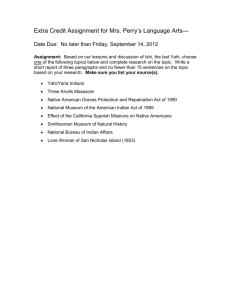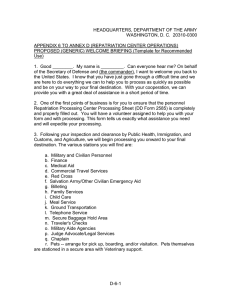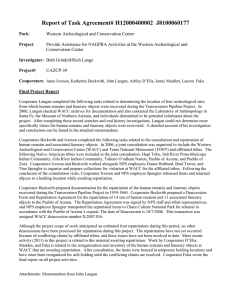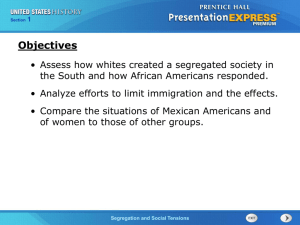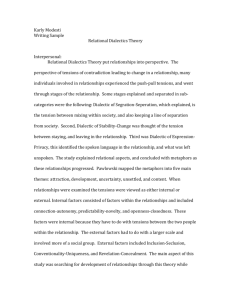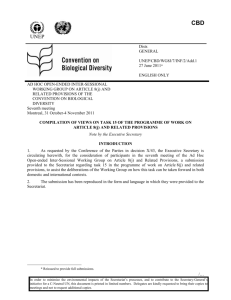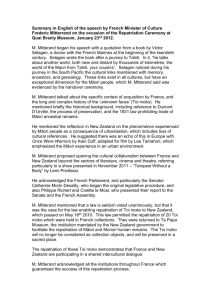CULTURAL INSTITUTION PROJECT
advertisement
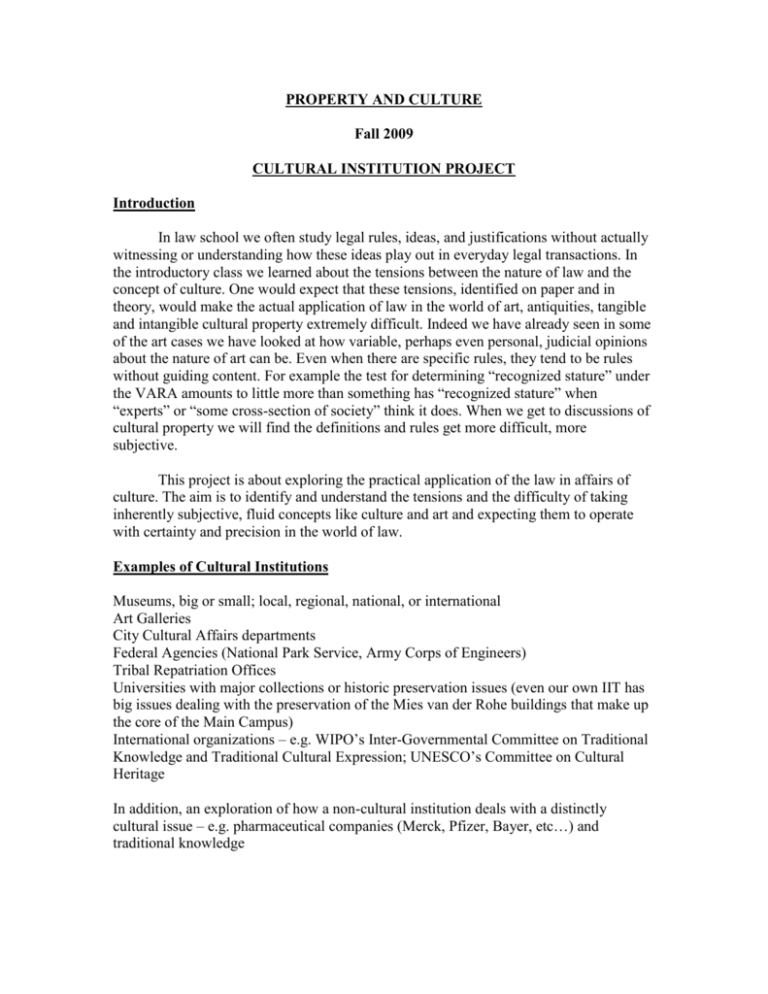
PROPERTY AND CULTURE Fall 2009 CULTURAL INSTITUTION PROJECT Introduction In law school we often study legal rules, ideas, and justifications without actually witnessing or understanding how these ideas play out in everyday legal transactions. In the introductory class we learned about the tensions between the nature of law and the concept of culture. One would expect that these tensions, identified on paper and in theory, would make the actual application of law in the world of art, antiquities, tangible and intangible cultural property extremely difficult. Indeed we have already seen in some of the art cases we have looked at how variable, perhaps even personal, judicial opinions about the nature of art can be. Even when there are specific rules, they tend to be rules without guiding content. For example the test for determining “recognized stature” under the VARA amounts to little more than something has “recognized stature” when “experts” or “some cross-section of society” think it does. When we get to discussions of cultural property we will find the definitions and rules get more difficult, more subjective. This project is about exploring the practical application of the law in affairs of culture. The aim is to identify and understand the tensions and the difficulty of taking inherently subjective, fluid concepts like culture and art and expecting them to operate with certainty and precision in the world of law. Examples of Cultural Institutions Museums, big or small; local, regional, national, or international Art Galleries City Cultural Affairs departments Federal Agencies (National Park Service, Army Corps of Engineers) Tribal Repatriation Offices Universities with major collections or historic preservation issues (even our own IIT has big issues dealing with the preservation of the Mies van der Rohe buildings that make up the core of the Main Campus) International organizations – e.g. WIPO’s Inter-Governmental Committee on Traditional Knowledge and Traditional Cultural Expression; UNESCO’s Committee on Cultural Heritage In addition, an exploration of how a non-cultural institution deals with a distinctly cultural issue – e.g. pharmaceutical companies (Merck, Pfizer, Bayer, etc…) and traditional knowledge Process Identify the cultural institution or cultural department you are interested in public, private, museum, corporation, government etc… - and the kind of issue you are interested in – acquisition, sale, identification, provenance, export, import, preservation, repatriation, etc… (you can choose more than one). Contact the cultural institution, agency, or corporation and locate someone to speak with who deals with the issue you are interested in – e.g. repatriations to Native American tribes at the Field Museum. Through discussion with individuals and digging up information that the institution makes (or makes to you) public, determine what are the applicable laws they have to consider, the process that the institution has adopted for dealing with the issue in question, what tend to be the trouble areas and, if possible, provide detailed descriptions of one or more issue the institution has had to deal with. While I don’t expect academic research for this paper, any additional media accounts of the issue in question would be great. Structure and Content of Report The final report should be approx. 15 double-spaced pages. I expect the reports to address the overall structure of the institution or the department in question, its mission, how the institution deals with a specific legal issue, how often these issues arise and, if possible, some actual detailed descriptions of specific issues (e.g. how the Field Museum planned, organized, and participated in the repatriation of a specific object, what kind of difficulties did it encounter, how did it resolve them, what is it’s position in general on the ultimate treatment of repatriated objects etc…) Deadlines Friday October 9th: Deadline for informing me that you will be doing a Cultural Institution Project (you can change to the 75% exam option after this date but you will not be able to choose the Cultural Institution option after this date). At this time you should also let me know what institution and the kind of issue(s) you have chosen to focus on. Friday December 18th: Report due

